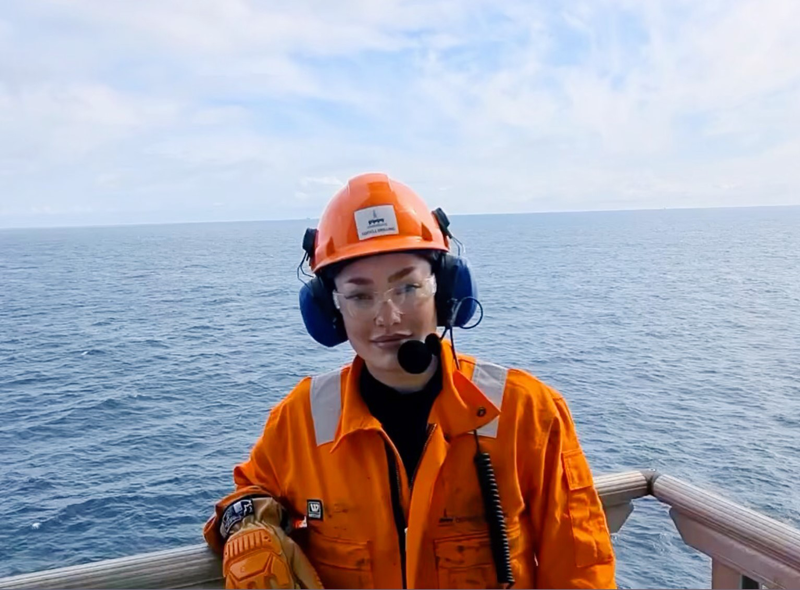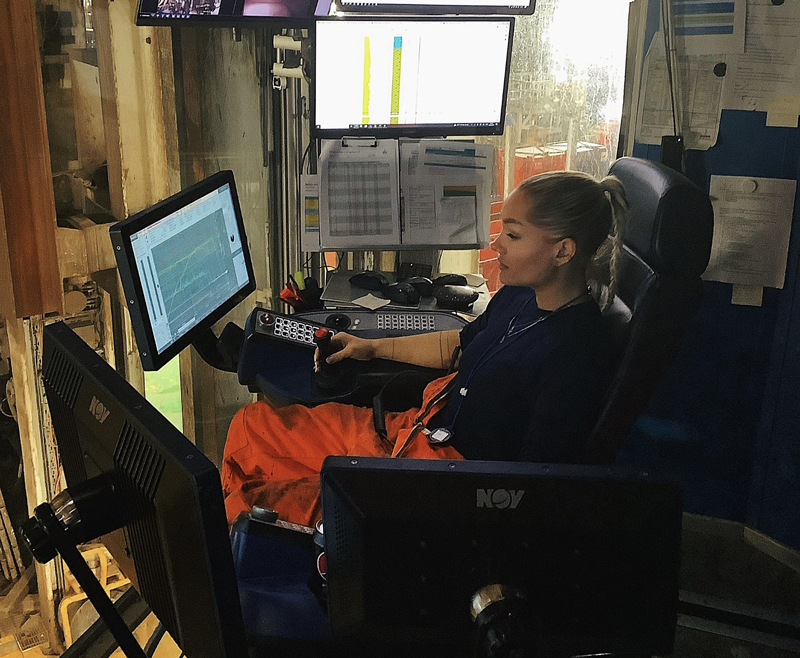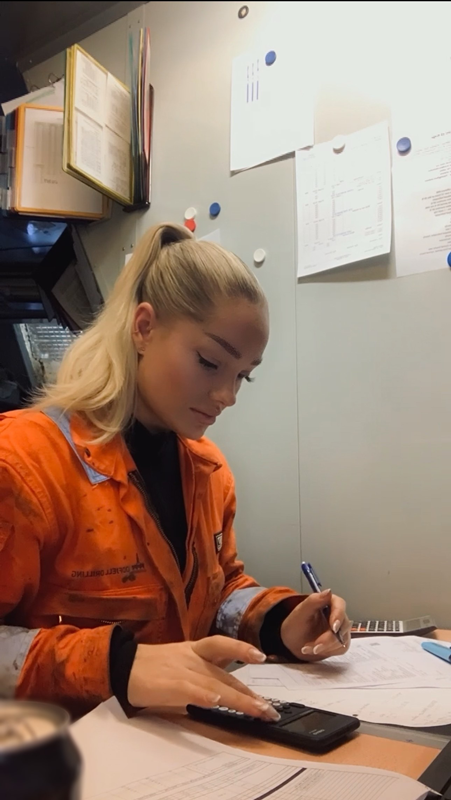As the planes whiz by in the background, I find myself firmly planted in the seat at the gate just before boarding, a routine familiar to many of us who must fly to our next point of transit before reaching our final destination: The offshore platform accessible only by helicopter.
Boarding the plane, I’m struck by the bittersweet feeling that always accompanies my return to work. It means leaving behind my private life, my family, and my loved ones, yet it also signifies a return to my second home, a place I’ve grown accustomed to over nine years in the industry. It’s where I’ve shared the full spectrum of emotions with my colleagues – moments of joy, satisfaction, stress and sadness – forging deep connections with those who, like me, lead a professional life isolated from the rest of the world, out at sea.
Clad in survival suits that resemble oversized sleeping bags, we board the helicopter, a sight that might seem absurd to an outsider, but is routine for us. These suits, once worn for emergency training exercises, now provide warmth and comfort as we embark on our journey to the platform, amid the noise and vibrations of the helicopter in flight. Most of us usually drift off to dreamland.

“We’re now on the platform in five minutes, pull your suit up and prepare for landing,” echoes the standardized message that I’ve heard so many times before, signaling our imminent arrival at our temporary home for the next two weeks.
Upon arrival, we receive updates from platform management on recent events, upcoming operations, production figures, and prevailing safety and health concerns. Then, I make my way to my cabin, stopping by my locker to retrieve my protective gear and personal belongings, essential items for life at sea.
Dressed in black cargo pants, technical sweaters and the ever so orange overalls, suitable for the harsh weather conditions, I make my way to the derrick, the highest point of the rig towering up to 150 meters above the sea. Here, the operation runs 24/7 regardless of storms, snow, hurricanes and other harsh conditions, requiring seamless handovers to ensure continuity and safety.
In the drillers’ cabin, filled with technical controls and monitors, I assess the progress of our operation, inspecting equipment and preparing for the tasks ahead. Putting on my helmet, I venture out to the field to verify equipment integrity and readiness for the next operational phase.

Ensuring the proper alignment of critical equipment, like the choke manifold and blowout preventer (BOP), which is our secondary barrier toward the well and its forces, should anything go wrong. I collaborate with colleagues like Bella, drilling and maintenance operators, to maintain safety standards and operational integrity. I am dependent on their assistance to get everything done in time for upcoming stages in the operation.
Navigating the pipe deck, where intricate pipes are laid out, I meticulously measure a bottom hole assembly (BHA), a critical component of our drilling string. Attention to detail is paramount, as any deviation could mean the difference between success and failure.
Back in the drillers’ cabin, I relieve my driller, assuming control of the drilling machine and coordinating tasks with the assistance of the toolpusher. As the shift progresses, I analyze data and make adjustments to optimize drilling performance, ensuring the integrity and correct placement of the drilling string.
Later, as I sit in the drillers’ cabin, I begin the calculations necessary for our operation. Utilizing the data gathered from the BHA measurements, I create a digital twin, a virtual representation of the drilling equipment. This twin serves as a reference point in the space out for our downhole tasks, allowing us to track the position of each component in real-time.
With the aid of specialized software, I input variables such as drill string dimensions, well depth, and drilling parameters to generate a detailed diagram (space out). This diagram provides crucial information on the position and configuration of the drilling string, aiding the driller in executing precise maneuvers during the operation.

After reviewing the calculations, I identify a potential issue with the positioning of the drilling string during descent to “tag the bottom” of the well. To rectify this, I determine the need for a small pipe called an X-over to adjust the string’s alignment.
I promptly contact Sandra, our logistics coordinator, to confirm the availability of the required equipment. With her assurance, I delegate the task to a drilling and maintenance operator, ensuring swift resolution before proceeding with the operation.
As the shift draws to a close, I engage in a handover with the incoming colleague, exchanging essential information for a seamless transition. After a fulfilling day’s work, I indulge in a satisfying dinner prepared by our skilled chefs, followed by a workout at the gym and a relaxing sauna session.
Finally, I retreat to my cabin, reflecting on another challenging yet rewarding day with my offshore family, grateful for the camaraderie and sense of purpose that defines our shared journey at sea. Working offshore is surely an untypical way of life, but part of me really loves it. I belong. And, even though I find myself isolated at sea, I’ve come to realize life unfolds here, too.
Veronica Henrichsen has nearly a decade of experience working in the North Sea. Born in 1995, she hails from Norway’s scenic west coast in Bergen, renowned for its rugged landscapes and coastal climate. An innate seeker of adventure, her journey led her to the North Sea’s challenges.
Presently, Henrichsen serves as an assistant driller, overseeing all aspects of drilling operations from preparation, to execution and post-operation. With a passion for precision and a commitment to excellence, she navigates the dynamic demands of offshore drilling with dedication and proficiency.
Oil and gas operations are commonly found in remote locations far from company headquarters. Now, it's possible to monitor pump operations, collate and analyze seismic data, and track employees around the world from almost anywhere. Whether employees are in the office or in the field, the internet and related applications enable a greater multidirectional flow of information – and control – than ever before.



